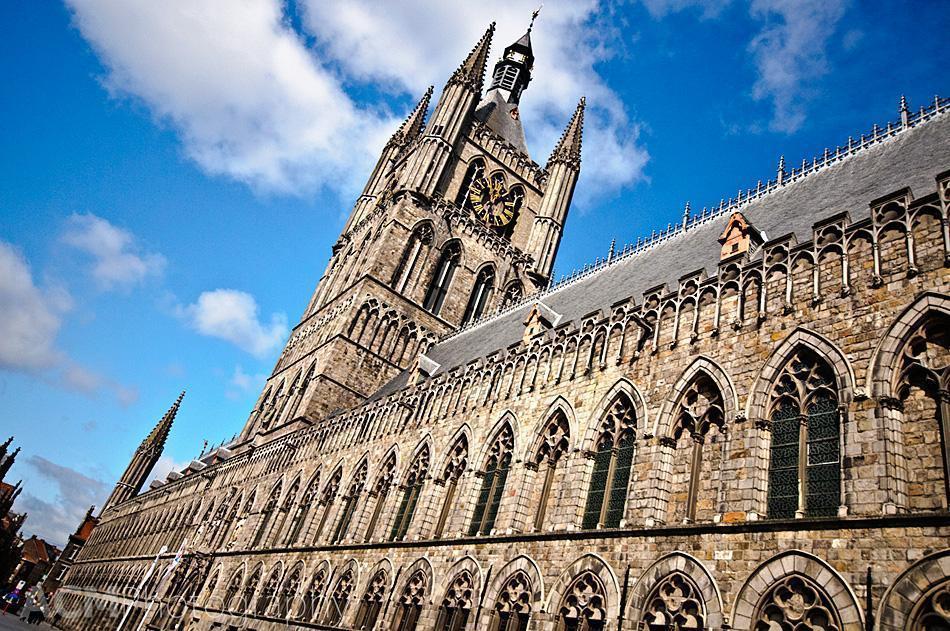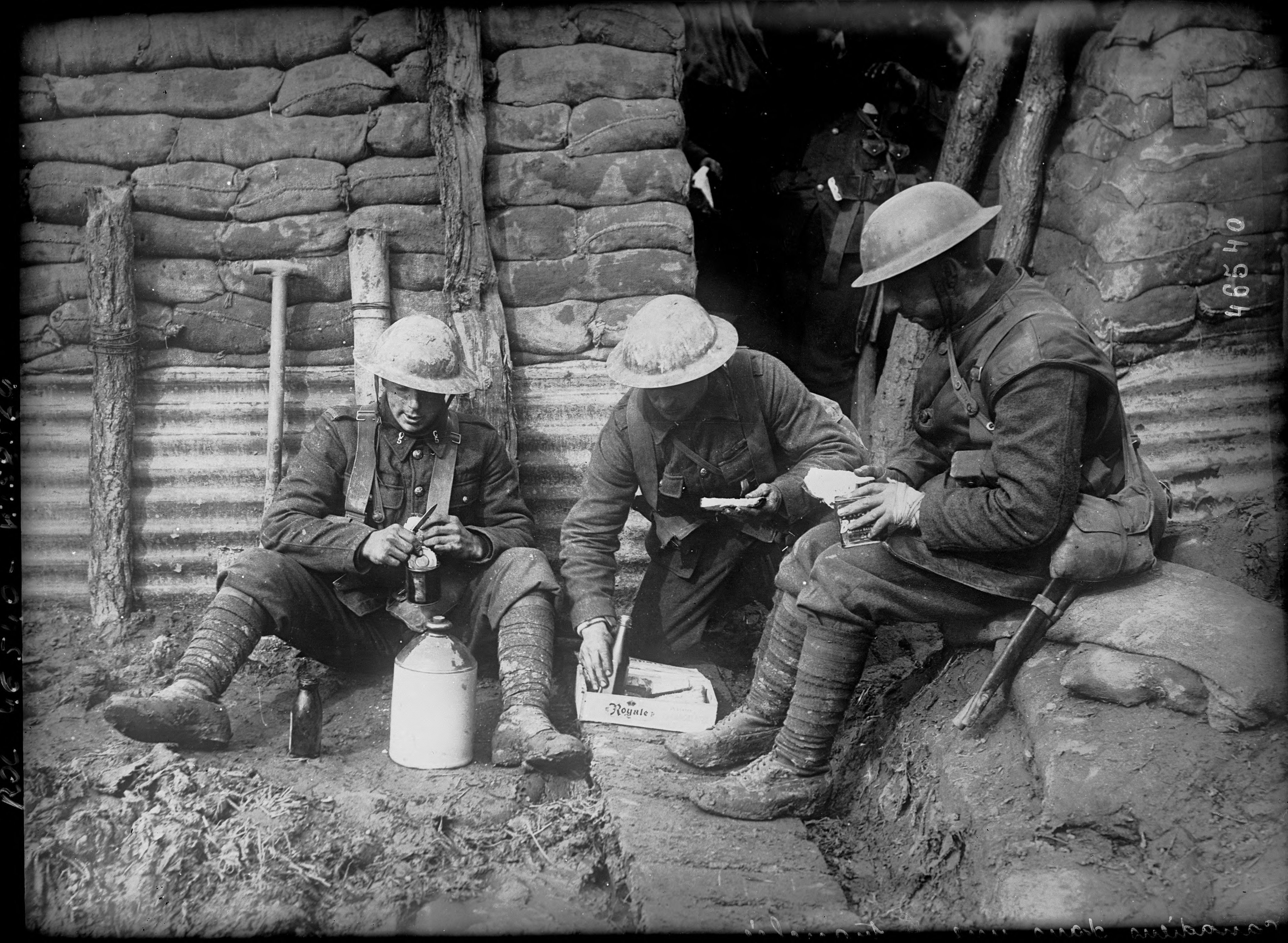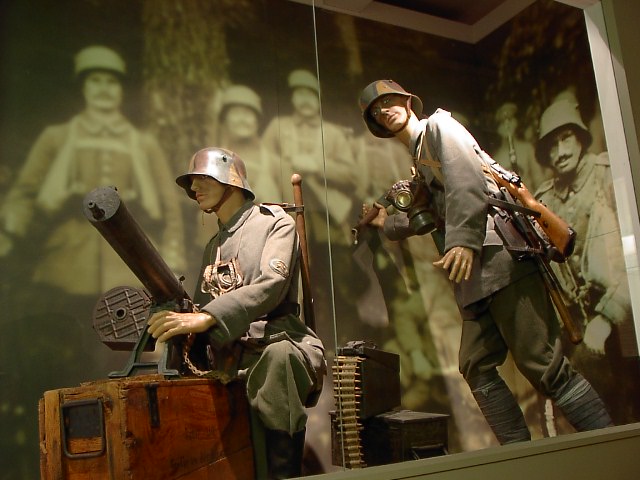
The in Flander’s Fields Museum, Ypres, Belgium
If the battlefields around Ypres give you a sense for the landscape in which the First World War was fought, the local museums provide the background and realities of the fighting. There are many museums along the front specializing in a particular battle, a type of weapon, or a specific military unit. However, in the Ypres area two museums provide a solid overview of the war and I think they complement each other well. These are the In Flander’s Fields Museum and the Memorial Museum Passchendaele 1917.
These two museums are somewhat more biased towards the British Commonwealth and the fighting in Flanders, but I’ve not yet visited a pair of museums about the First World War that are as comprehensive.
The In Flander’s Fields museum
The In Flander’s Fields museum concentrates on providing the visitor with an experience from multiple perspectives. Rather than overloading people with dates, names, and events, the museum weaves several stories together, taking a more social approach. Dates and events are still important, but they serve mainly as a timeline to support the stories.
At the beginning of your visit, you are randomly assigned the name of a real person. As you progress through the museum, you find out more about how the war affected this person, and, in the end, what happened to them.
Mixed in with the photographs, the history, the artifacts, and displays, there are quotes from soldiers, wives and parents, politicians, and writers. There are several short films that also illustrate the impact of the war on the area, the people, and the soldiers.
I can understand why this museum has won awards, as the social history approach makes it much more personal and real. You can view dates and events objectively, from a distance; people and their emotions force you to view the events on a personal level.
Memorial Museum Passchendaele 1917
By contrast, the Memorial Museum Passchendaele 1917 focuses more on the technological evolution of the war and how that culminated in the Third Battle of Ypres. It focuses mainly on the fighting around Passchendaele. The goal of the Allies was to break through, but after 5 months, they had only advanced 5 miles and at a cost of 140,000 deaths and more than 200,000 casualties.
Walking through the museum, you are presented with displays showing the different uniforms of the combatants, the equipment they carried, and the advancements in technology, such as gas, tanks, and machine guns. Dioramas, films, and images tell the story of the battle, within the context of the rest of the war. Each display is well thought out and relies on visuals, rather than requiring a lot of reading.
What is really special about this museum is the recreation of a British, front-line dugout. Artillery and constant battle had turned the battlefield into a moonscape where there was no place to hide or live. As a result, both sides dug down into the blue clay of Flanders and built underground shelters.
The British dugouts were framed in wood and planks were used to keep the walls from collapsing. Dugouts would typically include a command center, sleeping quarters, workshops, communications, a first aid post, and pumping room.
Although safer than being on the surface, a dugout would be miserable. There would be water dripping through the planks, pets (aka rats) scurrying beneath your feet, and the smell of unwashed men, gun oil, and human waste, overwhelming your senses. They weren’t comfortable by any stretch.
Descending into the replica at the Museum, I immediately felt like I was entering a sauna. The wood hadn’t been exposed to life with mud and men. Upon entering, I immediately added claustrophobia to the misery. Each room is tight and poorly lit. The accommodations had 16 men to a room little bigger than a typical bathroom. When I consider it all, I am amazed by the men who lived in this squalor for years.
Both museums are worth your time to visit. They have two very different approaches to their presentation of WWI, which complement each other well. I really appreciated the thought and detail each curator has put into their museum, making more than just a series of dates, events, and displays of artifacts. If you do plan to visit these museums, I recommend starting with the In Flander’s Fields museum, simply because it gives you a broader context that is useful when you are visiting the Memorial Museum.
For a full listing of our articles like this one, visit our Memorial Tourism in Belgium page.
- Wise Review: How to Save Money on International Currency Transfers - January 20, 2017
- Our 50+ Best Belgium Gifts Online - November 29, 2016
- Review: Crowne Plaza – Le Palace Hotel and Restaurant, Brussels, Belgium - September 30, 2016
- Visiting The Battlefields of Verdun, France
- Exploring the Battlefields of Ypres, Belgium
- Ypres World War One Museums
- Visiting the Fort de Loncin WWI Memorial Site, in Liege, Belgium
- Visiting the Atlantic Wall Museum, Oostende, Belgium
- Bastogne WW2 War Museum, Belgium
- Visiting the Bastogne Barracks and the Vehicle Restoration Centre, Wallonia, Belgium
- Visiting the Fort de Barchon in Liège, Belgium
- Visiting Fort Eben-Emael in Liège, Belgium
- Top 10 War Memorials for Canadians in Europe



